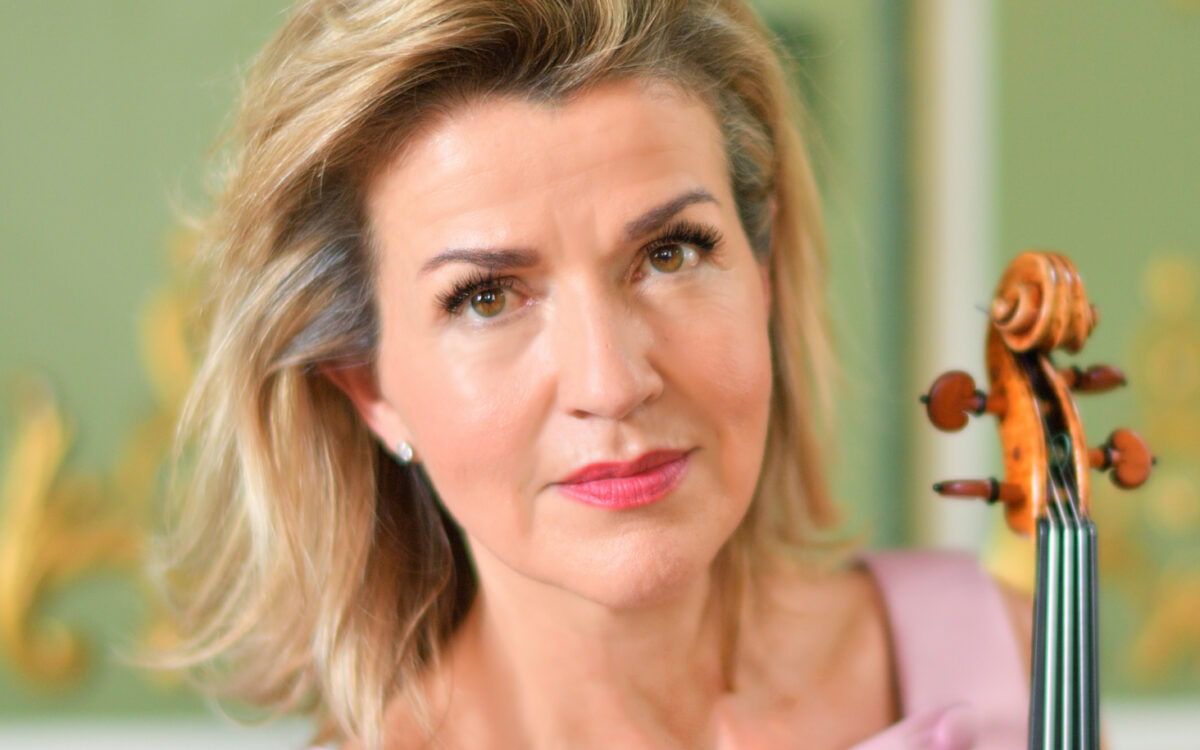Violin Concerto No. 1
Joannes Chrisostomus Wolfgang Gottlieb Mozart, who began calling himself Wolfgango Amadeo about 1770 and Wolfgang Amade in 1777, was born in Salzburg, Austria, on January 27, 1756, and died in Vienna on December 5, 1791. His Violin Concerto in B-flat, K.207, was written in 1773; nothing certain is known about its early performance history, but we do know he performed each of his five concertos himself at some point, even if he likely composed them with other Salzburg-based violinists in mind (e.g., the Salzburg concertmaster Antonio Brunetti).
In addition to the solo violinist, the score calls for an orchestra of 2 oboes, 2 horns, and strings (first and second violins, violas, cellos, and double basses). The concerto is about 21 minutes long.
Wolfgang Mozart is often depicted as playing the piano or harpsichord, but what is sometimes forgotten is his extraordinary accomplishment as a string player. Although he preferred to play the viola, and later featured it in some of his most impressive chamber works (the string quintets K.174, 515, and 516, which add a second viola to the string quartet), Mozart was a distinguished violinist. In 1777 he wrote to his father, “I played as if I were the finest fiddler in all Europe,” to which his father replied, “You yourself do not know how well you play the violin.” Strong praise indeed from Leopold, who usually had nothing but scorn for other violinists!
When Mozart and his father returned from two trips to Italy in the late 1760s and early 1770s, Mozart found himself back in Salzburg without the opera commissions or a permanent position in Italy he had so desired. It was then that he turned his attention to instrumental composition, writing many of his famous serenades (including the Serenata notturna, K.239; Haffner, K.250, and Posthorn, K.320), his first original piano concerto (K.175), and, of course, the violin concertos.
Mozart’s compositional development in the concerto genre can be traced through an examination of these five violin concertos. Although they were all written within a mere two years of each other, one can clearly see in them Mozart’s progression from a competent composer indebted to the past, to a master of the genre, experimenting with innovative techniques such as abrupt shifts in tone, texture, and passion within a single movement. Perhaps these techniques are traceable in part to his father’s precept that a good performer should be able to move without effort from the “mournful to the merry…in a word, he must play everything in such a way that he will himself be moved by it.” Mozart’s concertos move seamlessly between extremes of emotion and passion; and when experiencing a good performance, the audience should too.
The Violin Concerto No. 1 in B-flat, K.207, was written in Salzburg in April 1773, perhaps in anticipation of a trip that Mozart and his father took to Vienna in July of that same year. K.207 is Mozart’s very first surviving original concerto for any instrument, preceding the K.175 piano concerto by several months.
This first violin concerto stands out stylistically from the rest. It contains the signature Mozartean grace and charm, especially evident in the second movement, but many of the sequential patterns in the first and last movements are indebted to the Italian concerto tradition popularized by Antonio Vivaldi and Luigi Boccherini. Mozart undoubtedly heard many of these concertos while traveling in Italy with his father. But even in this first, most traditional concerto, there are hints of innovations to come. In the third movement, Mozart chooses an unusual form, a concerto/sonata hybrid rather than the traditional, lighter rondo form. In 1776, Mozart replaced it with another movement, the Rondo, K.269. Usually (as on the present occasion) the original presto movement is performed with the concerto and the rondo is reserved as a concert piece.
Steven Ledbetter
Steven Ledbetter, a freelance writer and lecturer on music, was program annotator of the Boston Symphony Orchestra from 1979 to 1998.
The first Boston Symphony Orchestra performance of the Violin Concerto No. 1 was at Tanglewood with Erich Leinsdorf conducting, on July 12, 1964.

